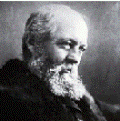
A (very brief) Guide to Tokyo
Tokyo is Japan’s capital and the world’s most populous metropolis. It is also one of Japan’s 47 prefectures, consisting of 23 central city wards and multiple cities, towns and villages west of the city center. The Izu and Ogasawara Islands are also part of Tokyo.
Prior to 1868, Tokyo was known as Edo. A small castle town in the 16th century, Edo became Japan’s political center in 1603 when Tokugawa Ieyasu established his feudal government there. A few decades later, Edo had grown into one of the world’s most populous cities. With the Meiji Restoration of 1868, the emperor and capital moved from Kyoto to Edo, which was renamed Tokyo (“Eastern Capital”). Large parts of Tokyo were destroyed in the Great Kanto Earthquake of 1923 and in the air raids of 1945.
Today, Tokyo offers a seemingly unlimited choice of shopping, entertainment, culture and dining to its visitors. The city’s history can be appreciated in districts such as Asakusa, and in many excellent museums, historic temples and gardens. Contrary to common perception, Tokyo also offers a number of attractive green spaces in the city center and within relatively short train rides at its outskirts.
Predominant Architecture:
Architecture in Tokyo has largely been shaped by Tokyo’s history. Twice in recent history has the metropolis been left in ruins: first in the 1923 Great Kantō earthquake and later after extensive firebombing in World War II.[1] Because of this, Tokyo’s current urban landscape is one of modern and contemporary architecture, and older buildings are scarce.
Places to See:
The Imperial Palace: residence of the Japanese Emperor was once the site of the Edo Castle in the 17th – 19th Century. Located in the heart of the city, it is a vast expanse of green and is surrounded by moats. The palace is open only for two days a year. However, walking tours of the inner palace grounds is conducted on weekdays.
The Asakusa district: Famous for the Senso-ji temple and is one of the few places in Tokyo that retains the old world charm. The temple markets, narrow streets, traditional shops and restaurants provide a glimpse of old Tokyo. It is also known as Tokyo’s oldest geisha district.
The Ueno Park: Located next to the Ueno station is a public park that offers visitors a large number of attractions. The area is home to many of the famous attractions in Tokyo. They are the Ueno Zoo, major museums like the Tokyo National Museum, The National Science Museum and The National Museum of Western Art.
Ginza Shopping Area: Often compared with New York’s Fifth Avenue, Ginza is a district situated in Chuo, Tokyo. It is known as one of the most luxurious shopping regions in Tokyo. The area is home to big department stores and almost all leading world brands have their presence here. Ginza is also famous for its bakeries and restaurants. The small allies leading off from the main road is lined with galleries exhibiting paintings and other artwork.
Religious Takanawa Area: Buddhist temples and Shinto shrines dot Japan’s landscape. These temples and shrines are an architectural splendor and many of these can be found in every part of Tokyo.
Full Post

Frederick Law Olmsted (1822 – 1903)
Frederick Olmsted was a landscape architect before the profession was founded. He was a visionary who foresaw the need for national parks, devised one of America’s first regional plans, and designed America’s first large suburban community.
Although Olmsted is famous today for his landscape architecture, he did not discover this career until he was 35. During his youth, Frederick Law Olmsted pursued several professions. Olmsted became a respected journalist and social commentator. Traveling through the southern United States, Olmsted wrote treatises against slavery. Olmsted’s book A Journey in the Seaboard States was not a great commercial success, but was highly regarded by readers in the Northern United States and England.
Olmsted joined with English-born architect Calvert Vaux to enter the Central Park design competition. Their plan won, and the pair worked as partners from 1865 to 1872. Together they designed many parks and planned communities, including Riverside, Illinois, which is known as America’s first modern suburb.
After Olmsted’s death, his stepson, John Charles Olmsted (1852-1920), his son, Frederick Law Olmsted Jr. (1870-1957), and their successors continued the landscape architecture firm Olmsted founded. Records show that the firm participated in 5,500 projects between 1857 and 1950.
Notable Buildings:
United States Capitol Grounds
Many College Campuses
Biltmore Estate Gardens and Grounds
Central Park in New York City
Riverside community in Illinois
Frederick Law Olmsted’s Partnerships: